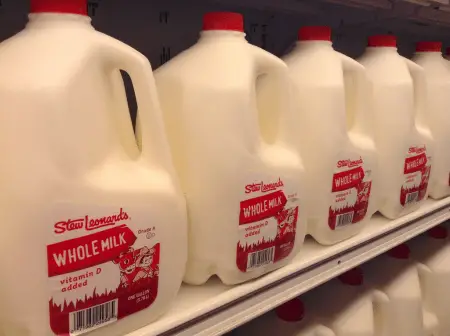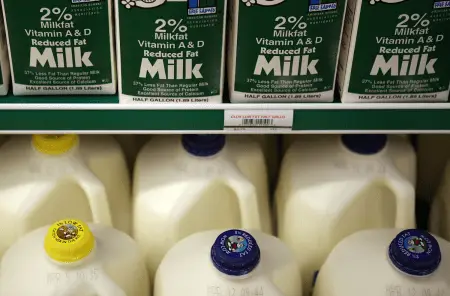Milk is a favorite beverage not only among children but adults as well. It is a protein and calcium-filled drink that has a creamy and refreshing taste. Some would think that all kinds of milk are the same. However, there are different types of milk to suit different tastes. In this article, we’ll focus on whole milk and 2 percent milk. Continue reading to find out how these two types of milk are differentiated.
Summary Table
| Whole Milk | 2 Percent Milk |
| 3.25% – 5% milk fat in weight | 2% milk fat in weight |
| 8 g fat per 8-ounce serving | 5 g fat per 8-ounce serving |
| 150 calories per 8-ounce serving | 120 calories per 8-ounce serving |
| More creamy taste | Less creamy taste |
Definitions

Whole milk is the type of milk that contains 3.25% – 5% milk fat in weight, depending on the cow. As this type of milk has the highest amount of milk fat, it also has the creamiest taste. A regular 8-ounce serving of whole milk has around 8 grams of fat and 150 calories.

2 percent milk contains 2% milk fat in weight. As it has reduced milk fat, the creaminess of the milk is also lessened.
A regular 8-ounce serving of 2 percent milk has around 5 grams of fat and 120 calories.
How are Whole Milk and 2% Milk Processed?
The milk process starts with dairy cows who eat, ruminate, and sleep. Some dairies allow their cows to wander in pastures, where they can graze on fresh grass. Other dairies may feed their cows grain, hay, or silage while keeping them confined during the day.
Once the cows’ udders are full, it’s time to head to the milking barn. Some cows are milked by hand, while others are machine-milked. After this, the milk is stored in frigerated vats or silos for no longer than 48 hours.
The vats and silos agitate the milk to ensure all of it stays cold and that milkfat doesn’t separate from the milk.
Next, the milk is collected from the dairy farm. All the milk in the silos or vats is loaded onto tankers that have stainless steel bodies. The tankers are insulated to keep the milk cold during transportation to the factory.
At the factoring, the milk is pumped into storage silos where it goes through several processes. The milk is spun in a centrifuge to separate the cream from the milk. After this, the cream and milk are remixed to create the different types of milk, including whole milk and 2% milk.
The milk also undergoes pasteurization and homogenization to ensure the milk doesn’t contain harmful bacteria and to ensure the fat is evenly distributed in the milk.
In some cases, whole milk and 2% milk, as well as other types of milk, may undergo microfiltration, which increases the milk’s storage life through UHT (ultra-high temperature) treatment. Additional ingredients will also be added to flavored milk.
Whole Milk vs 2 Percent Milk
The main difference between whole milk and 2 percent milk is in the amount of milk fat in weight. Whole milk has around 3.25% – 5% milk fat, while 2 percent milk contains milk fat that is 2% of the total weight of the milk. Due to the higher amount of fat, whole milk tastes creamier than 2 percent milk.
Nonetheless, the protein, calcium, and essential nutrients content of both types of milk remain the same.
When you drink a regular serving of milk, equivalent to an 8-ounce glass, you get 8 grams of fat and 150 calories from whole milk.
On the other hand, for the same size serving, you get 5 grams of fat and 120 calories from 2 percent milk. Nutritionists say that milk plays a vital role in a healthy diet. The fat content helps slow down digestion and aids in preventing a spike in blood sugar levels.





